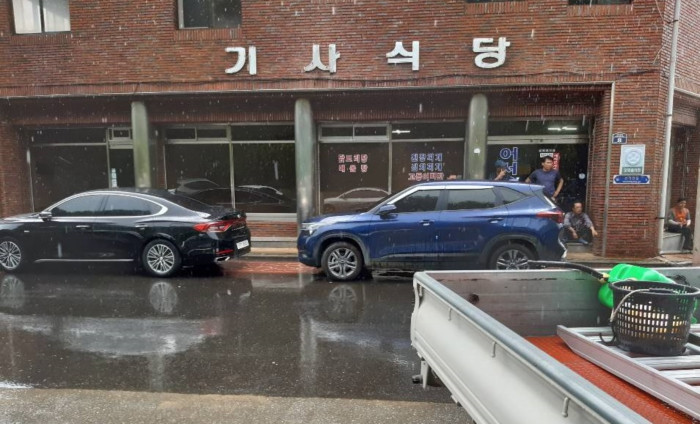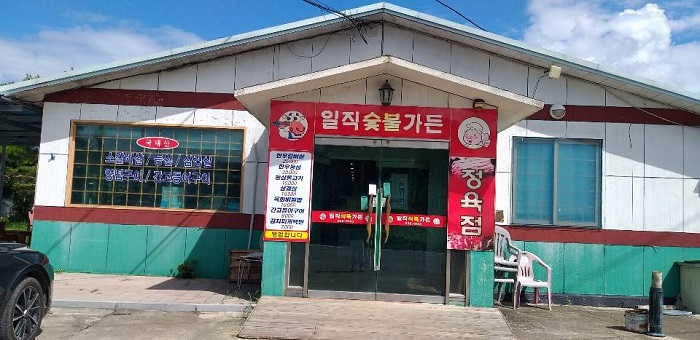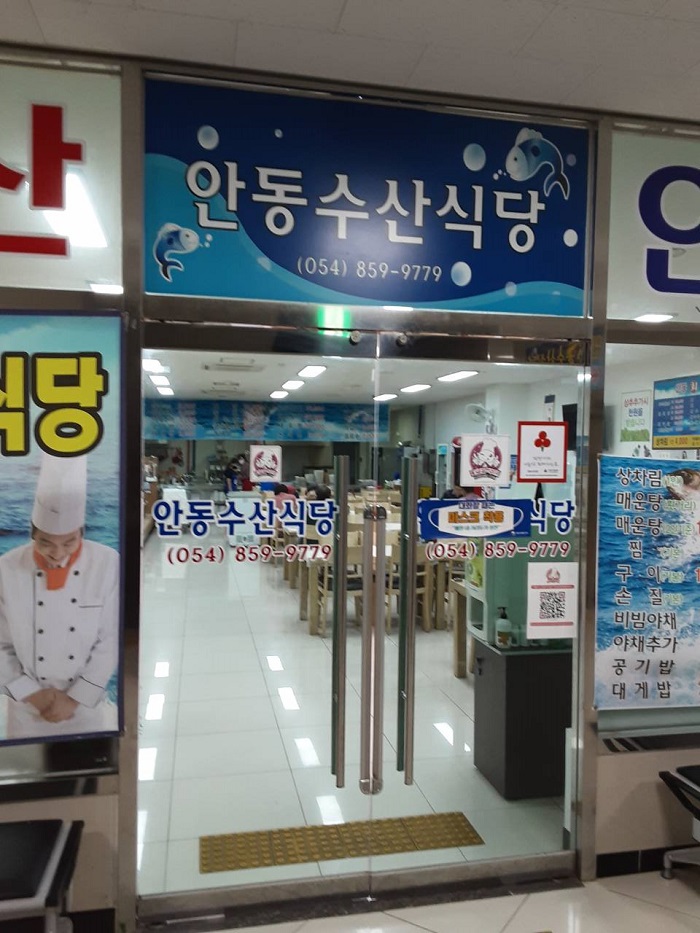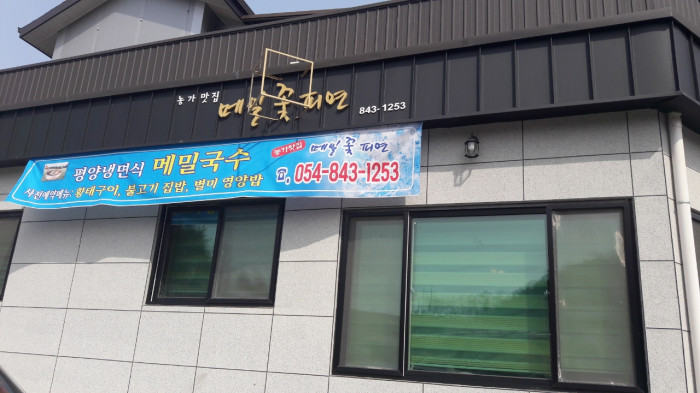Jukheon Traditional House [Korea Quality] / 죽헌고택 [한국관광 품질인증]
13.0Km 2023-09-05
24 , Taejangjukheon-gil, Andong-si, Gyeongsangbuk-do
+82-10-5217-2174
Jukheon Old House is an old house near Bongjeongsa Temple in Andong, Gyeongsangbuk-do. Originally built in 1886 by independence activist Kim Ga-jin, it was later acquired by Jukheon Lee Hyeon-chan and until recently was used as a family gathering place for jaesa ancestral rites. There are three 2-person guestrooms (Jukheon Gallery Room, Seojae Room and Elizabeth Room) and one four-person room (Jukheon-dong Farm Room). Visitors can explore the old thatched millhouse with its ancient treadmill, or enjoy a walk along Queen Elizabeth Road to Bongjeongsa Temple. A simple complimentary breakfast is provided.
Imhaho Gisa Sikdang(임하호기사님식당)
13.2Km 2021-04-09
8, Seonchakjang-gil, Andong-si, Gyeongsangbuk-do
+82-54-822-4929
There are a variety of side dishes, so you can enjoy different foods. This Korean dishes restaurant is located in Andong-si, Gyeongsangbuk-do. The representative menu is kimchi stew.
Suaedang [Korea Quality] / 안동 수애당 [한국관광 품질인증]
13.6Km 2023-10-23
1714-11 , Sugogyonggye-ro, Andong-si, Gyeongsangbuk-do
+82-54-822-6661
Suaedang House in Andong, Gyeongsangbuk-do, was built in 1939 by independence activist Soo Ae Yu Jin-geol, and is a Gyeongsangbuk-do cultural asset. The hipped-and-gabled pavilion and the ㄱ-shaped gobangchae (female servants’ quarters) face each other across the courtyard, and the house has a 10-metre lofty gate. Suaedang was moved to its current location in 1987 due to the construction of the Imha Dam. The room and Daecheongmaru are red clay-walled and natural painted. The view of the lake from Suaecang is very beautiful.
Bongjeongsa Temple [UNESCO World Heritage] (봉정사 [유네스코 세계문화유산])
13.9Km 2023-05-18
222, Bongjeongsa-gil, Andong-si, Gyeongsangbuk-do
+82-54-853-4181
Bongjeongsa Temple is believed to have been built in 672 by the Great Buddist Monk Uisang. However, other documents seem to state that Neungin Daedeuk, a disciple of Monk Uisang, established the temple. During the Korean War, many documents related to the temple were destroyed, so much of the history has been lost. In 1972, while reconstruction work was being done on Geungnakjeon Hall, records were discovered stating the hall was repaired in 1363. This discovery gave concrete evidence that Geungnakjeon Hall is the oldest wooden building in the nation.
Iljik Sikyuk Sutbul Garden (일직식육숯불가든)
14.2Km 2021-03-24
2474-9, Pungil-ro, Andong-si, Gyeongsangbuk-do
+82-54-858-0103
It is a house where you can enjoy Korean traditional bulgogi. This Korean dishes restaurant is located in Andong-si, Gyeongsangbuk-do. The representative menu is bulgogi hot pot.
Andong Susan Sikdang (안동수산식당)
14.8Km 2021-03-24
64, Yutongdanji-gil, Andong-si, Gyeongsangbuk-do
+82-54-859-9779
It is a store where you can enjoy fresh seafood. This Korean dishes restaurant is located in Andong-si, Gyeongsangbuk-do. The representative menu is cold raw fish soup.
Memilkkot Pimyeon (메밀꽃피면)
14.8Km 2021-03-26
22, Seonseong 4-gil, Andong-si, Gyeongsangbuk-do
+82-54-843-1253
It is a place where the directly made soba noodles and thick broth are excellent. The best menu at this restaurant is buckwheat noodles. This Korean dishes restaurant is located in Andong-si, Gyeongsangbuk-do.
Yekki Village (예끼마을)
15.1Km 2024-05-30
14 Seonseong-gil, Dosan-myeon, Andong-si, Gyeongsangbuk-do
Yekki Village is an artistic village in Andong. The alleyways are decorated with colorful murals, the galleries feature work from local artists, and visitors can experience a hanok experience. The biggest charm of the village is the Sunseong Susang-gil Waterway, a floating path across the lake.
Sunseong Susang-gil Waterway (선성수상길)
15.1Km 2024-05-30
14 Seonseong-gil, Dosan-myeon, Andong-si, Gyeongsangbuk-do
Sunseong Susang-gil Waterway is a 1-kilometer-long floating pathway that connects Sunseonghyeon Culture Complex with Andong Lakeside Park. Because the pathway floats on the water, it rocks with each step one takes, creating the feeling of truly walking on water. At the halfway point of the waterway is an exhibition of black-and-white photos and materials from Yean Elementary School, lost to the formation of the lake following the construction of Andong Dam in 1974.
Chohae Gotaek [Korea Quality]초해고택[한국관광 품질인증]
15.9Km 2023-10-24
17-12, Manchwidang-gil, Uiseong-gun, Gyeongsangbuk-do
+82-10-2910-2092
Chohae Gotaek (Old House) in Uiseong, Gyeongsangbuk-do, is a hanok stay which has stood for 100 years in Sachon Village - a traditional Confucian village. The house was built and lived in by the Pungsan Ryu clan, one of the most important Andong families going back to the 1500s. Built of Korean pine, the house has a classic hanok style, with some really beautiful touches: the elegant lines and the patterns in the windows and floor have all been admired by traditional architecture experts.
![Jukheon Traditional House [Korea Quality] / 죽헌고택 [한국관광 품질인증]](http://tong.visitkorea.or.kr/cms/resource/33/2993133_image2_1.jpg)

![Suaedang [Korea Quality] / 안동 수애당 [한국관광 품질인증]](http://tong.visitkorea.or.kr/cms/resource/92/3010192_image2_1.jpg)
![Bongjeongsa Temple [UNESCO World Heritage] (봉정사 [유네스코 세계문화유산])](http://tong.visitkorea.or.kr/cms/resource/16/2654216_image2_1.jpg)




![Chohae Gotaek [Korea Quality]초해고택[한국관광 품질인증]](http://tong.visitkorea.or.kr/cms/resource/59/3021359_image2_1.jpg)
 English
English
 한국어
한국어 日本語
日本語 中文(简体)
中文(简体) Deutsch
Deutsch Français
Français Español
Español Русский
Русский